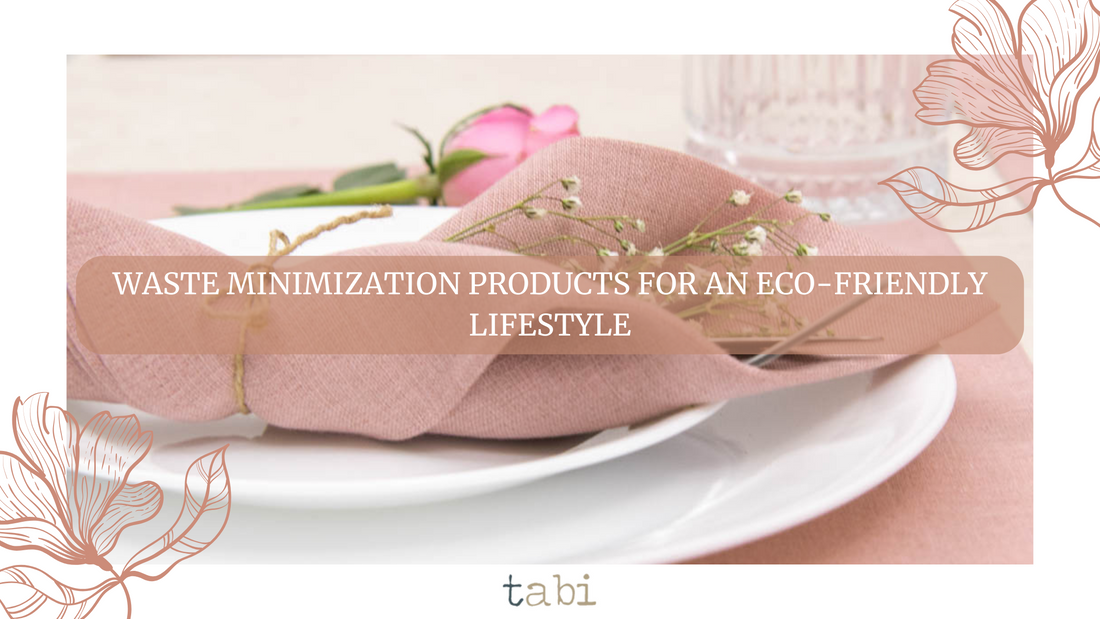
Waste Minimization Products for an Eco-Friendly Lifestyle
In an era where environmental consciousness has become paramount, the need for waste minimization has taken center stage. Individuals and households alike are increasingly seeking ways to reduce their ecological footprint. A fundamental aspect of this journey involves integrating sustainable products into daily life. This article explores several waste minimization products, focusing on the benefits of cotton napkins, natural fabrics such as linen, and upcycled products. Each of these items not only contributes to a more sustainable lifestyle but also embodies a commitment to preserving the planet for future generations.
The Case for Cotton Napkins
Cotton napkins represent a simple yet profound shift away from single-use paper products. Traditionally, households have relied on disposable paper napkins, which contribute significantly to landfill waste. In contrast, cotton napkins are reusable, durable, and biodegradable.
Investing in high-quality cotton napkins offers several advantages. Firstly, they can withstand numerous washes without losing their structural integrity or absorbency. This longevity means fewer resources are consumed over time compared to disposable alternatives. Additionally, cotton is a natural fiber, which ensures that once a cotton napkin reaches the end of its life cycle, it can decompose without leaving harmful residues.
Furthermore, cotton napkins can elevate the dining experience. Available in a variety of colors and patterns, they can enhance the aesthetic appeal of any meal. From casual breakfasts to formal dinners, these napkins provide a touch of elegance while aligning with eco-friendly practices.
Embracing Natural Fabrics: The Linen Advantage
Linen, derived from the flax plant, is another remarkable natural fabric that plays a pivotal role in waste minimization. Its production requires significantly less water and pesticides compared to cotton, making it a more sustainable choice. Linen is known for its durability and breathability, attributes that enhance its functionality in a variety of applications, from tablecloths to clothing.
One of the most compelling aspects of linen is its ability to age gracefully. Unlike synthetic fabrics, which often degrade quickly and contribute to microplastic pollution, linen becomes softer and more comfortable with each wash. This characteristic ensures that linen products have a long lifespan, which is vital in a world grappling with textile waste.
Moreover, linen is naturally hypoallergenic and antimicrobial, making it a healthier choice for home textiles. Its moisture-wicking properties also make it an excellent option for summer wear, further broadening its appeal. By choosing linen over synthetic fabrics, consumers not only support sustainable agriculture but also embrace a timeless aesthetic that transcends fleeting trends.
The Allure of Upcycled Products
In recent years, upcycled products have emerged as a compelling solution to the waste crisis. Upcycling involves repurposing materials that would otherwise be discarded, transforming them into functional and aesthetically pleasing items. This practice not only diverts waste from landfills but also encourages creativity and innovation.
The spectrum of upcycled products is vast, encompassing everything from furniture and home décor to clothing and accessories. For example, discarded denim can be transformed into stylish bags, while old wooden pallets can be reimagined as rustic coffee tables. Each piece tells a story, reflecting both the material's past and its new life, thereby fostering a deeper appreciation for resources.
Furthermore, the upcycling movement encourages consumers to rethink their purchasing habits. By choosing upcycled products, individuals support small businesses and artisans dedicated to sustainable practices. This conscious consumerism helps build a circular economy, where resources are reused and waste is minimized.
Practical Tips for Incorporating Waste Minimization Products
Transitioning to an eco-friendly lifestyle involves more than simply purchasing sustainable products; it requires a shift in mindset. Here are several practical tips for incorporating waste minimization products into daily life:
1. Start Small
Begin by replacing disposable items with reusable alternatives. For example, swap paper napkins for cotton ones, or use a linen tablecloth instead of plastic. Gradually expand your sustainable choices as you become more comfortable.
2. Prioritize Quality Over Quantity
Invest in high-quality products that are designed to last. While the initial cost may be higher, the long-term savings and environmental benefits will outweigh the expense.
3. Educate Yourself and Others:
Share your knowledge about waste minimization with friends and family. Engage in discussions about sustainability, encouraging others to join the movement.
4. Support Local Artisans
When purchasing upcycled products, seek out local artisans and businesses. This not only helps reduce carbon footprints associated with shipping but also strengthens community ties.
5. Get Creativity
Consider how you can repurpose items in your own home. Old jars can serve as storage containers, while worn-out clothing can be transformed into cleaning rags or art projects.
Conclusion
Incorporating waste minimization products into an eco-friendly lifestyle is a meaningful way to contribute to environmental preservation. Cotton napkins, natural fabrics like linen, and upcycled products exemplify the potential for sustainability in our daily choices. As we navigate the complexities of modern consumption, these items serve as reminders of the beauty and utility inherent in sustainable living. By embracing such products, we not only reduce waste but also foster a culture of mindfulness and respect for our planet. Each small step taken today can lead to a significant impact tomorrow, paving the way for a more sustainable future.
FAQs on Waste Minimization Products for an Eco-Friendly Lifestyle
1. What are waste minimization products?
Waste minimization products are items designed to reduce waste generation and promote sustainability. These products are often reusable, biodegradable, or made from upcycled materials. Examples include cotton napkins, natural fabric items like linen, and products made from repurposed materials.
2. How do cotton napkins help reduce waste?
Cotton napkins significantly cut down on single-use paper waste. By using reusable cotton napkins instead of disposable ones, households can minimize their reliance on paper products, reducing landfill contributions and conserving resources associated with paper production, such as water and trees.
3. Why is linen considered a more sustainable fabric?
Linen is derived from the flax plant, which requires less water, pesticides, and energy compared to cotton and synthetic fibers. It is biodegradable, durable, and becomes softer with use, allowing it to last longer than many other fabrics. This longevity reduces the frequency of replacement, contributing to lower waste overall.
4. What are the benefits of using upcycled products?
Upcycled products repurpose materials that would otherwise be discarded, reducing waste and the demand for new resources. They often feature unique designs and craftsmanship, promoting creativity and supporting local artisans. Choosing upcycled items fosters a circular economy, encouraging sustainable consumption practices.
5. How can I incorporate waste minimization products into my daily life?
Start by replacing disposable items with reusable alternatives, such as cotton napkins instead of paper ones. Invest in high-quality natural fabrics like linen for household textiles. Look for upcycled products when shopping, and consider repurposing items you already own. Educating yourself and others about sustainability can also encourage a more eco-friendly lifestyle.
